Late this morning I got alerted by a friend who lives on the neighborhood pond that there was a new visitor hanging out, and I wasted no time in getting over there. Thankfully, the visitor decided to stay put long enough.
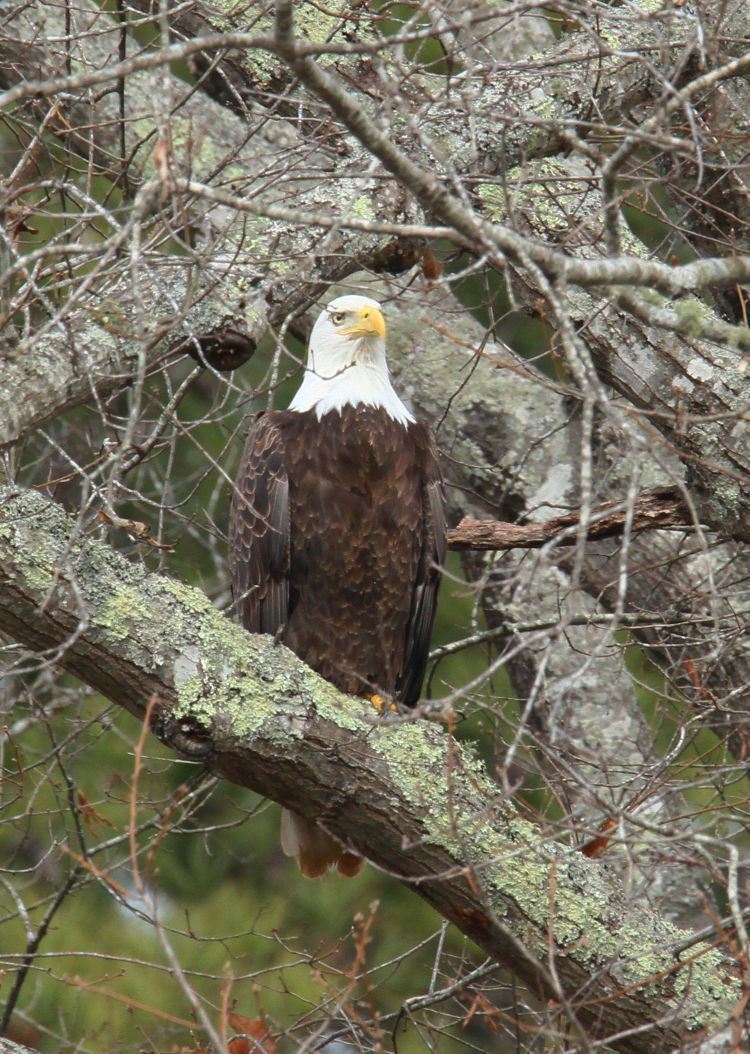
This, of course, is a bald eagle (Haliaeetus leucocephalus,) and the first that I’ve seen there, though my friend has seen them in previous years. It’s safe to say that it won’t hang around, since the pond is less than 300 meters long by 100 wide, so a bit small for an eagle to feel comfortable with, not to mention frequented by people with dogs. It was likely just checking out the fish activity while exploring the area.
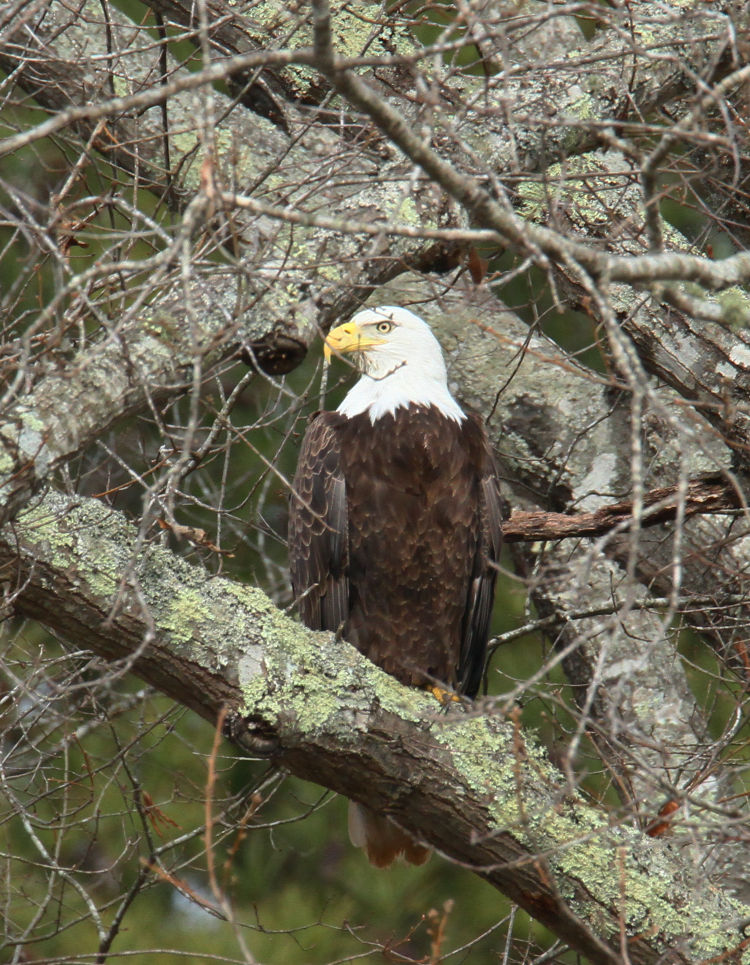
I was lucky in that it was winter and thus the foliage was gone from most of the trees, but I could never manage a perfectly clear angle without small intervening branches. My shooting distance for these two images was probably about 80 meters, so this is significantly cropped, but sharp enough at least.
The eagle moved to another tree in a bit better concealment, and as I was circling around to get a clear vantage, it decided to move on. I feel pretty comfortable that I wasn’t the cause of this since I wasn’t anywhere near as close as two joggers that passed, multiple times, so I think the eagle was just ready to head out.
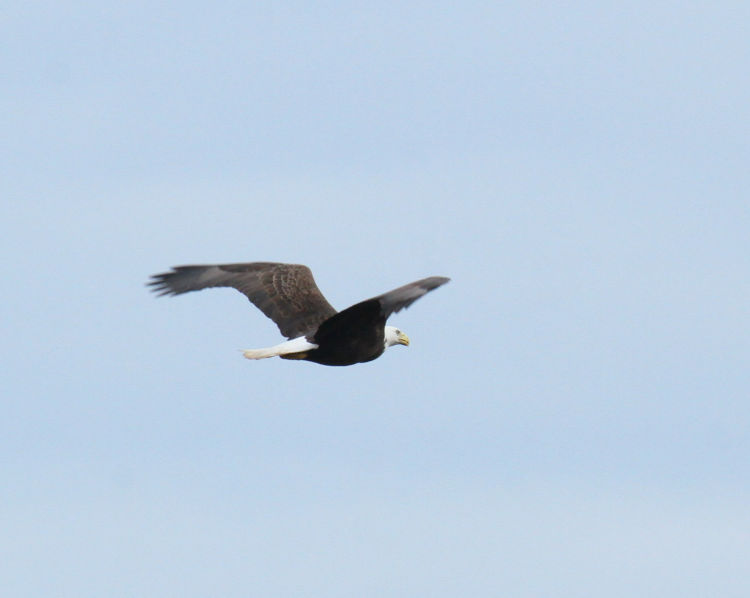
I watched to see if it was going to choose another tree nearby, but no, it disappeared over the treeline in the middle distance, so I continued around the pond because I hadn’t been there in a while.
A great blue heron (Ardea herodias herodias) appeared from someplace and cruised down to the pond’s edge, then chose another spot; as it was coming in to land, it made an abrupt turn and dove into the shallows, a lot like a seagull, and stood up with a capture – perhaps lucky that it did not do this in front of the eagle, a species notorious for stealing fish from others.
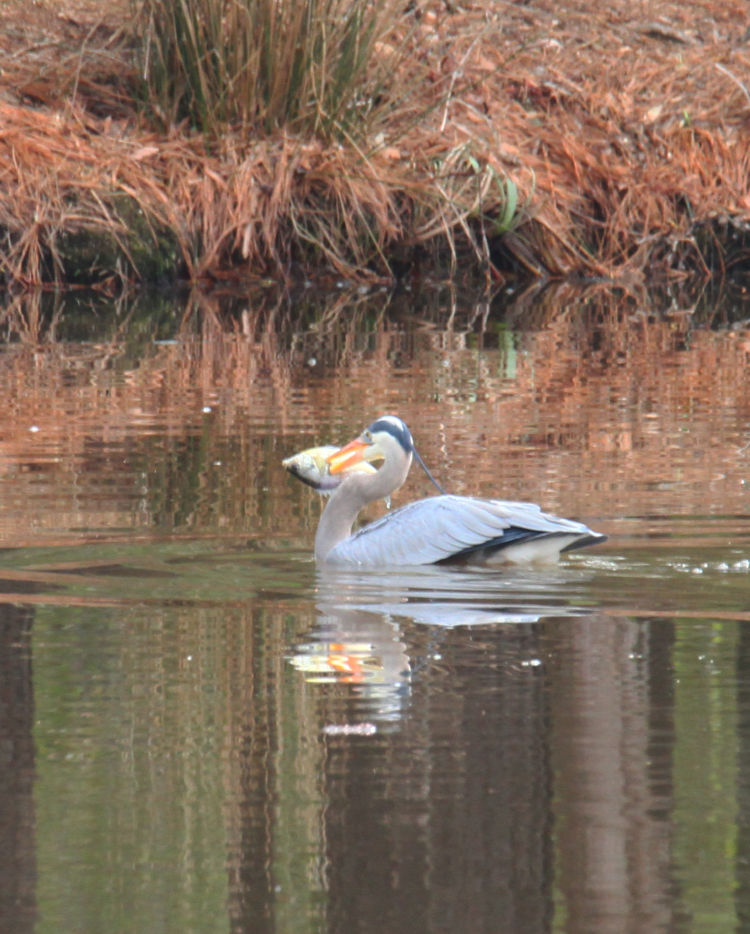
The heron immediately headed towards shore as I advanced around the pond trying for a better view, but after passing some intervening bushes, I could no longer see the heron. Eventually, with the long lens I spied it hiding behind some trees right on the shore, but this meant that I had some distance to cover before I’d get a clear view again. And once I had, I found that the heron had finished its meal already.
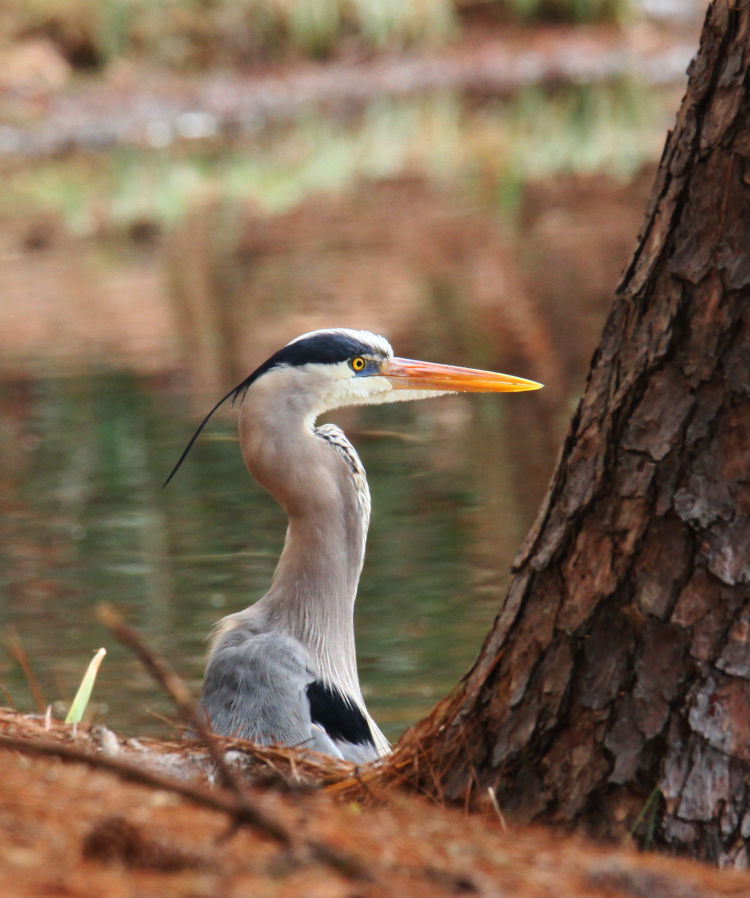
This isn’t surprising, because herons swallow their meals whole like most birds; what I chiefly missed was it dislodging the fish from its stab-through capture to realign it head-first so it could be swallowed, almost certainly why the heron climbed onto shore in the first place: the dislodged fish wouldn’t be able to escape into the water. So I settled for the profile.
Also evident on the pond were a few double-crested cormorants (Nannopterum auritum,) initially perched on the old pilings but eventually setting out for their own meals.
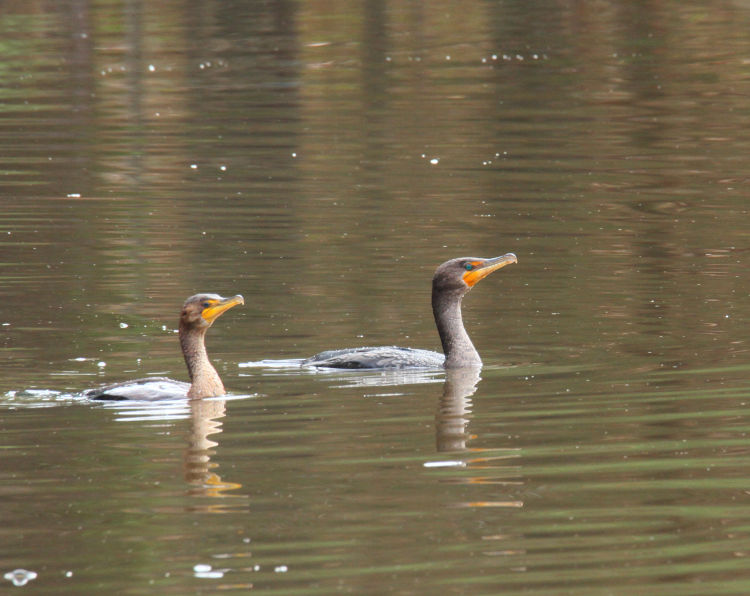
The brown neck denotes a female, but I’m not absolutely sure, given the light conditions, that the one on the right is a male – they’re typically overall black, or at least dark-grey, so this might just be a color variation in another female. I’ve seen multiple females hanging out together quite often, and never distinct evidence of a mated pair doing so, so I commit to nothing. But I also think I missed one of them surfacing with a fish, again because of bushes blocking a clear shot (you see the pics from when I finally get a nice view – I don’t bother illustrating the conditions.) I admit that I should have been checking out the pond more, but also admit that it’s been damn cold for the past week or so and I likely would have seen nothing anyway – today got a lot warmer and will continue to do so for another couple of days.
Plus, I have another reason to check things out, but in this case, it’ll be overnight:
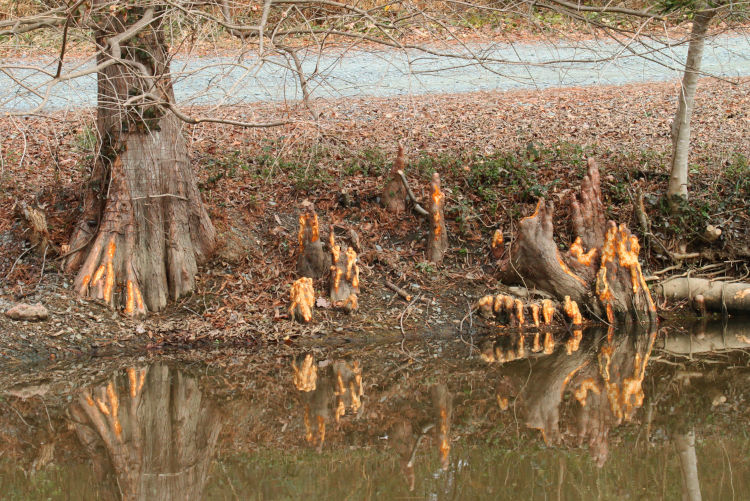
That’s distinct evidence that, after having disappeared last year, at least one beaver is back in the area, and I spotted several different instances in multiple locations – more than a night’s worth of activity, is what I’m saying. Probably won’t see anything by daylight until early spring at the earliest, so I’ll have to resort to flash stalking again, see what turns up. You’ll find it here if I’m successful.




















































